Thingiverse
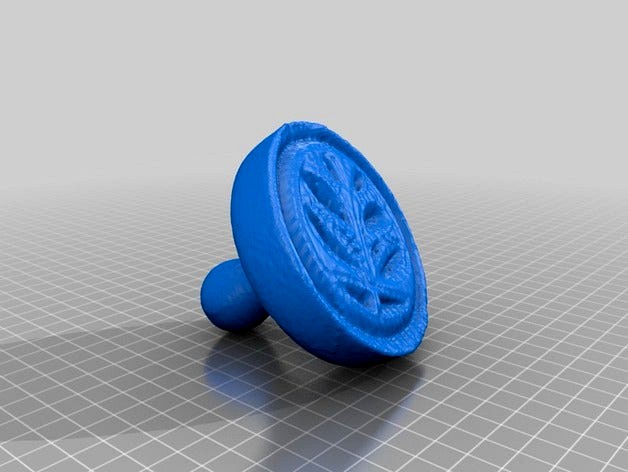
18th Century Butter Print: by smlee
by Thingiverse
Last crawled date: 2 years, 12 months ago
Women’s Economic Development, Butter-Making and Butter Prints
=============================================================
This project seeks to use 3D scanning technology to replicate and interpret a butter print, dated around the eighteenth century, from the collections of the North Carolina Museum of History (Accession # 1916.8.1). According to museum records, Scottish immigrants brought this wooden print to North Carolina with the image of what is believed to be a tobacco leaf. It is the hope of our group that our 3D model of this object on Thingiverse will augment the limited factual information known about the butter mold. This technology will allow visitors of all age groups to further understand past methods of food preparation and handle technology from bygone eras. More broadly, audience members can critically analyze the broader significance of this piece of material culture for the individuals who made it, used it, and brought it with them to North America.
Methods and Technology
For this project, we utilized the MakerBot Digitizer to render a 3D scan of this butter mold. Starting at $799, the MakerBot Digitizer is a relatively inexpensive option for 3D scanning. This technology allows users to place an object in the center of a rotating circular surface while a laser scanner traces the outline of it from all sides. As the Digitizer software website describes, the scanner “contains an algorithm that connects hundreds of thousands of points into a seamless digital mesh in just seconds.” Through this process, we laid the butter mold in the center and observed the scanner as it formed these images together into a 3D model.
The MakerBot Digitizer created a 3D model of the butter mold in a .thing file. In order to convert the .thing file to an .STL file in order to edit and clean up the file before uploading it to the Thingiverse website, we used the WinZip program. Unfortunately, the full WinZip software is only available for purchase, but a free trial is available. Next, the free Netfabb Basic software allowed our group to further edit and examine a 3D rendering of the butter mold. Netfabb helps users remove outlying or extraneous material picked up by the scanner and to prepare the model for printing by rotating and adding a flat surface on which to place it. In our view, a flat base underneath our object proved unnecessary as the most distinctive aspect of this particular butter mold is the imprint of the leaf.
Goals
Creating a 3D model of the butter print allows visitors to the North Carolina Museum of History hold and examine the object up close. It is our hope that, once printed, a 3D replica of this object will serve as a more effective pedagogical tool. Although it might seem that this model diminishes visitors’ ability to observe the texture and craftsmanship of this mold, it is our belief that placing the 3D print near the artifact itself will better accentuate the details involved in designing the mold. Such a comparison allows visitors of many different age groups to consider historical questions and interpretations about what such an object indicates about the culture, economy, and society occupied by the mold’s original owners. Lastly, allowing for more physical contact with objects such as the butter mold could allow for greater audience engagement, especially among school groups.
Historical Interpretation
The production of butter was a major source of income for rural families in the United States from the colonial times into the early part of the twentieth century. Women were generally the ones in charge of butter production, and beginning in the late 1780s women began to successfully establish butter as a farm product with a “steady market and stable price.”[1] Despite ups and downs in the prices of wheat, corn, cotton and livestock, the price of butter remained fairly fixed, and many families became dependent on the production of butter and other dairy products, done almost entirely by women, as part of their necessary income.[2] Butter prints and molds were an important part of successfully marketing butter, serving as the trademark for each of these sellers’ butter. The seller’s butter print was their mark of excellence, their “final proud flourish,” and made their product easily identifiable to their community.[3] The production of butter had become so profitable, that in the early nineteenth century, men began to become involved in this process, and large-scale, mechanized dairy operations began to spread.[4]
Butter PrintAccording to the North Carolina Museum of History, this butter print was made from 1770-1820 and was supposedly brought to the United States by a Scottish immigrant in the 18th century. This print likely was produced in an artisan’s shop since the knob is lathe-turned, but the design is hand-carved.[5] While the majority of butter prints in the late eighteenth-century were lathe-turned in Great Britain and Europe, a burgeoning class of artisans in the United States began producing lathe-turned butter prints at this same time, meaning that the print could have been produced in either location.[6] The type of wood used to create the mold would further narrow this question, but this information is currently unavailable. Furthermore, many of the designs from Great Britain at the time were more intricate than this butter print, and many in Europe were already factory-made at this time. The design on the print appears to be a tobacco leaf, indicating that the print may have originated in the United States. The majority of surviving butter prints originated in Pennsylvania, where tobacco was produced, and many Scottish immigrants came to North Carolina from Pennsylvania in the early nineteenth century, possibly giving an indication of the origins of the artifact. While the exact origins of this butter print are unknown, it represents the importance of butter–making to rural income. Although butter prints and molds were “primarily practical and secondarily aesthetic,” their designs serve as a reminder of women’s role in the growth of dairy as an industry in the United States.[7]
[1] Joan Jensen, “Butter-Making and Economic Development in Mid-Atlantic America from 1750 to 1850,” Signs 25, no. 4 (July 1988), 816. See also: Joan Jensen, “Cloth, Butter and Boarders: Women’s Household Production for the Market,” Review of Radical Political Economics 12, no. 2 (July 1980), 14-24.
[2] Jensen, “Butter-Making and Economic Development in Mid-Atlantic America from 1750 to 1850,” 816.
[3] Karla Albertson Klein, “Wooden Butter Prints & Molds,” Early American Life 25, no. 4 (August 1994), 10. Paul E. Kindig, Butter Prints and Molds (West Chester, PA: Schiffer Publications, 1986), 39.
[4] Jensen, “Butter-Making and Economic Development in Mid-Atlantic America from 1750 to 1850,” 825.
[5] Kindig, Butter Prints and Molds, 86.
[6] Kindig, Butter Prints and Molds, 89
[7] Kindig, Butter Prints and Molds, 39.
=============================================================
This project seeks to use 3D scanning technology to replicate and interpret a butter print, dated around the eighteenth century, from the collections of the North Carolina Museum of History (Accession # 1916.8.1). According to museum records, Scottish immigrants brought this wooden print to North Carolina with the image of what is believed to be a tobacco leaf. It is the hope of our group that our 3D model of this object on Thingiverse will augment the limited factual information known about the butter mold. This technology will allow visitors of all age groups to further understand past methods of food preparation and handle technology from bygone eras. More broadly, audience members can critically analyze the broader significance of this piece of material culture for the individuals who made it, used it, and brought it with them to North America.
Methods and Technology
For this project, we utilized the MakerBot Digitizer to render a 3D scan of this butter mold. Starting at $799, the MakerBot Digitizer is a relatively inexpensive option for 3D scanning. This technology allows users to place an object in the center of a rotating circular surface while a laser scanner traces the outline of it from all sides. As the Digitizer software website describes, the scanner “contains an algorithm that connects hundreds of thousands of points into a seamless digital mesh in just seconds.” Through this process, we laid the butter mold in the center and observed the scanner as it formed these images together into a 3D model.
The MakerBot Digitizer created a 3D model of the butter mold in a .thing file. In order to convert the .thing file to an .STL file in order to edit and clean up the file before uploading it to the Thingiverse website, we used the WinZip program. Unfortunately, the full WinZip software is only available for purchase, but a free trial is available. Next, the free Netfabb Basic software allowed our group to further edit and examine a 3D rendering of the butter mold. Netfabb helps users remove outlying or extraneous material picked up by the scanner and to prepare the model for printing by rotating and adding a flat surface on which to place it. In our view, a flat base underneath our object proved unnecessary as the most distinctive aspect of this particular butter mold is the imprint of the leaf.
Goals
Creating a 3D model of the butter print allows visitors to the North Carolina Museum of History hold and examine the object up close. It is our hope that, once printed, a 3D replica of this object will serve as a more effective pedagogical tool. Although it might seem that this model diminishes visitors’ ability to observe the texture and craftsmanship of this mold, it is our belief that placing the 3D print near the artifact itself will better accentuate the details involved in designing the mold. Such a comparison allows visitors of many different age groups to consider historical questions and interpretations about what such an object indicates about the culture, economy, and society occupied by the mold’s original owners. Lastly, allowing for more physical contact with objects such as the butter mold could allow for greater audience engagement, especially among school groups.
Historical Interpretation
The production of butter was a major source of income for rural families in the United States from the colonial times into the early part of the twentieth century. Women were generally the ones in charge of butter production, and beginning in the late 1780s women began to successfully establish butter as a farm product with a “steady market and stable price.”[1] Despite ups and downs in the prices of wheat, corn, cotton and livestock, the price of butter remained fairly fixed, and many families became dependent on the production of butter and other dairy products, done almost entirely by women, as part of their necessary income.[2] Butter prints and molds were an important part of successfully marketing butter, serving as the trademark for each of these sellers’ butter. The seller’s butter print was their mark of excellence, their “final proud flourish,” and made their product easily identifiable to their community.[3] The production of butter had become so profitable, that in the early nineteenth century, men began to become involved in this process, and large-scale, mechanized dairy operations began to spread.[4]
Butter PrintAccording to the North Carolina Museum of History, this butter print was made from 1770-1820 and was supposedly brought to the United States by a Scottish immigrant in the 18th century. This print likely was produced in an artisan’s shop since the knob is lathe-turned, but the design is hand-carved.[5] While the majority of butter prints in the late eighteenth-century were lathe-turned in Great Britain and Europe, a burgeoning class of artisans in the United States began producing lathe-turned butter prints at this same time, meaning that the print could have been produced in either location.[6] The type of wood used to create the mold would further narrow this question, but this information is currently unavailable. Furthermore, many of the designs from Great Britain at the time were more intricate than this butter print, and many in Europe were already factory-made at this time. The design on the print appears to be a tobacco leaf, indicating that the print may have originated in the United States. The majority of surviving butter prints originated in Pennsylvania, where tobacco was produced, and many Scottish immigrants came to North Carolina from Pennsylvania in the early nineteenth century, possibly giving an indication of the origins of the artifact. While the exact origins of this butter print are unknown, it represents the importance of butter–making to rural income. Although butter prints and molds were “primarily practical and secondarily aesthetic,” their designs serve as a reminder of women’s role in the growth of dairy as an industry in the United States.[7]
[1] Joan Jensen, “Butter-Making and Economic Development in Mid-Atlantic America from 1750 to 1850,” Signs 25, no. 4 (July 1988), 816. See also: Joan Jensen, “Cloth, Butter and Boarders: Women’s Household Production for the Market,” Review of Radical Political Economics 12, no. 2 (July 1980), 14-24.
[2] Jensen, “Butter-Making and Economic Development in Mid-Atlantic America from 1750 to 1850,” 816.
[3] Karla Albertson Klein, “Wooden Butter Prints & Molds,” Early American Life 25, no. 4 (August 1994), 10. Paul E. Kindig, Butter Prints and Molds (West Chester, PA: Schiffer Publications, 1986), 39.
[4] Jensen, “Butter-Making and Economic Development in Mid-Atlantic America from 1750 to 1850,” 825.
[5] Kindig, Butter Prints and Molds, 86.
[6] Kindig, Butter Prints and Molds, 89
[7] Kindig, Butter Prints and Molds, 39.
Similar models
thingiverse
free

18th Century Butter Print by mwcates
...to be that of a tobacco leaf.
for further historical interpretation, see here: http://susannalee.org/dh/2014/11/04/butterprint/
3dwarehouse
free

Catalyst
...catalyst
3dwarehouse
building in charlotte, north carolina, united states of america
3dwarehouse
free

First Citizens Bank
...t citizens bank
3dwarehouse
building in greensboro, north carolina, united states of america #100_s_elm_st #greensboro #nc_27401
3dwarehouse
free

Lincoln Financial Building
...ial building
3dwarehouse
building in greensboro, north carolina, united states of america #100_n_greene_st #greensboro #nc_27401
3dwarehouse
free

Wells Fargo Tower
... fargo tower
3dwarehouse
building in greensboro, north carolina, united states of america #300_n_greene_st #greensboro #nc_27401
thingiverse
free

19th-Century Hog Scraper by smlee
...ity’s library website.
us epa agi pork production. accessed october 22, 2014. http://www.epa.gov/oecaagct/ag101/printpork.html.
3dwarehouse
free

North Carolina 33, Chocowinity, North Carolina, United States
...use
north carolina 33, chocowinity, north carolina, united states #chocowinity #north_carolina #north_carolina_33 #united_states
3dwarehouse
free

Wood Residence Hall
...39;north carolina state of the university of north carolina at raleigh' to 'north carolina state university' in 1965.
3dwarehouse
free

North Carolina State Flag with Flagpole
...north carolina state flag with flagpole
3dwarehouse
the flag of the state of north carolina with a basic flagpole.
3d_export
$15
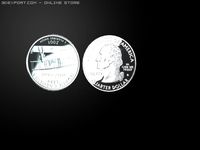
North Carolina State Quarter 3D Model
...d model
3dexport
north carolina state quarter coin us currency
north carolina state quarter 3d model maideninblack 21459 3dexport
Smlee
thingiverse
free

19th-Century Hog Scraper by smlee
...ity’s library website.
us epa agi pork production. accessed october 22, 2014. http://www.epa.gov/oecaagct/ag101/printpork.html.
thingiverse
free

19th Century Leather Children's Shoe: by smlee
...ttp://www.nps.gov/civilwar/search-soldiers-detail.htm?soldierid=9ee02cbf-dc7a-df11-bf36-b8ac6f5d926a (accessed october 30, 2014).
thingiverse
free
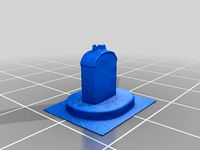
Tea Caddy Used at Edenton Tea Party in 1774 by smlee
...er house,” north carolina history project, accessed november 3, 2014, http://www.northcarolinahistory.org/encyclopedia/475/entry.
Butter
3ddd
$1

Butterely
...butterely
3ddd
комод
комод butterely(127x53x104)
3ddd
$1

Butterely
...butterely
3ddd
тумба , прикроватная
тумба прикроватная butterely (58х40х66)
3d_ocean
$4

Butter Dish
...butter dish
3docean
breakfast butter butter dish. stainless steel deco deko food kitchen
a stainless steel butter dish
turbosquid
$9

Butter
...alty free 3d model butter for download as 3ds, obj, and blend on turbosquid: 3d models for games, architecture, videos. (1181559)
turbosquid
$29

Butter
...y free 3d model butter for download as 3ds, obj, c4d, and fbx on turbosquid: 3d models for games, architecture, videos. (1242828)
turbosquid
$15

Butter
...e 3d model butter for download as max, 3ds, dae, fbx, and obj on turbosquid: 3d models for games, architecture, videos. (1594731)
turbosquid
$2

Butter Dish
...quid
royalty free 3d model butter dish for download as blend on turbosquid: 3d models for games, architecture, videos. (1495310)
turbosquid
$8

Butter Dish
...royalty free 3d model butter dish for download as obj and fbx on turbosquid: 3d models for games, architecture, videos. (1379509)
turbosquid
$12

Butter Churn
... 3d model butter churn for download as obj, dae, fbx, and stl on turbosquid: 3d models for games, architecture, videos. (1664682)
turbosquid
$10

Butter Margarine
...model butter margarine for download as 3ds, max, obj, and fbx on turbosquid: 3d models for games, architecture, videos. (1317123)
18Th
3ddd
$1
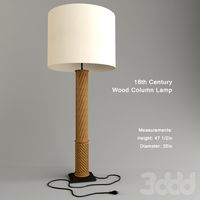
18th Century Wood
...18th century wood
3ddd
lucca antiques
18th century wood column lamp
measurements:
height: 47 1/2in
diameter: 20in
turbosquid
$44

The village of 18th century
... of 18th century for download as fbx, blend, and unitypackage on turbosquid: 3d models for games, architecture, videos. (1143065)
turbosquid
$20

18th Century Armchair
...model 18th century armchair for download as max, obj, and fbx on turbosquid: 3d models for games, architecture, videos. (1179595)
3d_export
$10

18th century sword 3D Model
...18th century sword 3d model
3dexport
sword 18th century medival blade
18th century sword 3d model blackfedora 24322 3dexport
turbosquid
$30

18th century brooch
... available on turbo squid, the world's leading provider of digital 3d models for visualization, films, television, and games.
cg_studio
$30

18th century brooch3d model
...ry brooch3d model
cgstudio
.max - 18th century brooch 3d model, royalty free license available, instant download after purchase.
turbosquid
$25

18 West 18th Street
... free 3d model 18 west 18th street for download as ma and obj on turbosquid: 3d models for games, architecture, videos. (1250557)
turbosquid
$69

Sailing yacht of the 18th century
...yacht of the 18th century for download as obj, fbx, and blend on turbosquid: 3d models for games, architecture, videos. (1330259)
turbosquid
$20

18th Century Clipper Sjip
... available on turbo squid, the world's leading provider of digital 3d models for visualization, films, television, and games.
turbosquid
$7

The collection of engravings of the 18th century.
... available on turbo squid, the world's leading provider of digital 3d models for visualization, films, television, and games.
Century
3ddd
$1

Century Furniture
.../www.centuryfurniture.com/gallery/showitem.aspx?sku=639-532
century furniture dining room windowpane arm chair 639-532
3d_export
$7

mid century chair
...mid century chair
3dexport
mid-century type dining chair
turbosquid
$10

Century Chair
...free 3d model century chair for download as max, fbx, and obj on turbosquid: 3d models for games, architecture, videos. (1711388)
turbosquid
$20

Century Car
... available on turbo squid, the world's leading provider of digital 3d models for visualization, films, television, and games.
3ddd
$1

Century Furniture Saturn Chair
...century furniture saturn chair
3ddd
century furniture
century furniture saturn chair
3d_export
$65

century avenue
...century avenue
3dexport
simple rendering of the scene file
3ddd
free
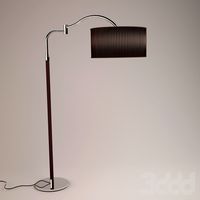
Торшер Century Terra
...ra
3ddd
century terra
модель торшера century terra делалась в archicad`е. только провод был добавлен в максе, ну и рендер конечно
3ddd
$1

Стул Century Antiques
...стул century antiques
3ddd
стул фирмы century классический с текстурами и материалами. рендерено в максе+vray.
3ddd
$1

18th Century Wood
...18th century wood
3ddd
lucca antiques
18th century wood column lamp
measurements:
height: 47 1/2in
diameter: 20in
3ddd
free
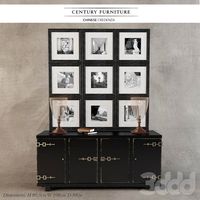
Комод Century furniture
...а: century furniture
модель: chinese credenza
артикул: 609-403
ширина: 198 см
высота: 89,5 см
глубина: 59 см
в архиве 3dsmax 2010
design_connected
$27
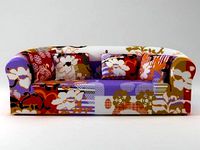
...print
designconnected
moroso print computer generated 3d model. designed by wanders, marcel.
3ddd
free

Eichholtz Prints
...- eichholtz print central station i
13 - eichholtz print central station ii
14 - eichholtz print marisa
15 - eichholtz print tish
3ddd
$1

Eichholtz Prints
...print abstract - set of 2
10 - eichholtz print orange abstract
11 - eichholtz print buddha right
12 - eichholtz print buddha left
turbosquid
$1

... available on turbo squid, the world's leading provider of digital 3d models for visualization, films, television, and games.
3ddd
free
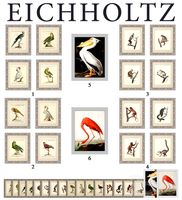
Eichholtz Prints
...of 4
2 - print dunbar 2 set of 4
3 - print guadeloupe 1 set of 4
4 - print guadeloupe 2 set of 4
5 - print giles
6 - print trett
3ddd
$1

Eichholtz Prints
...nt tutti frutti
3 - eichholtz prints watson - set of 2
4 - eichholtz prints antique nautilus - set of 2
5 - eichholtz print tiara
3d_export
$5
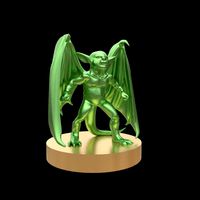
Monster for printing
...monster for printing
3dexport
monster 3d model printing
3ddd
free
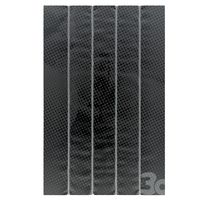
printed rug
...printed rug
3ddd
ковер
very creative printed rug
3ddd
free
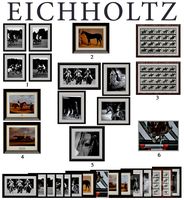
Eichholtz Prints
...иал: бумага
габариты (вхш): 72 x 62 см
описание: print sweetmeat - постер в деревянной раме.
3 - prints varsity set of 2
арти
3ddd
free

Art Print Posters
...art print posters
3ddd
прованс
art print posters by patrician prints
